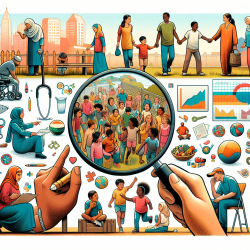Introduction
In the realm of youth development, especially for those facing social and economic barriers, innovative approaches are essential. A recent study, "Study protocol for a 2-year longitudinal study of positive youth development at an urban sport for development facility," provides valuable insights into how sport can be a transformative tool for positive youth development (PYD).
Understanding the Study
This study, conducted at the MLSE LaunchPad in Toronto, Canada, explores the impact of sport for development (SFD) programming on urban youth aged 6-29. The research employs a mixed-methods approach, combining quantitative data from self-reports and pedometers with qualitative insights from focus groups. The study's core objective is to assess the feasibility and effectiveness of a sport-based intervention in promoting PYD outcomes such as resilience, self-esteem, and life skills.
Key Findings and Implications
The study highlights several critical outcomes for practitioners aiming to enhance their programs:
- Age-Specific Outcomes: The study stratifies participants into three age cohorts, each with tailored objectives. For instance, younger participants (6-12 years) focus on increasing physical literacy and activity, while older youth (19-29 years) emphasize employment and continued training.
- Importance of Context: The success of PYD programs is significantly influenced by the environment. Safe, supportive spaces where youth feel valued and understood are crucial for engagement and retention.
- Role of Relationships: Building positive relationships between youth and program leaders is essential. Leaders should act as relatable role models, fostering a sense of belonging and encouraging goal-setting.
- Intentional Program Design: Programs must be intentionally designed with clear objectives and a theory of change. This ensures that activities are aligned with desired outcomes, such as life skills development and health behaviors.
Encouraging Further Research
While the study provides a robust framework for PYD through sport, it also opens avenues for further research. Practitioners are encouraged to explore:
- The long-term impacts of sustained participation in sport programs on youth development.
- The role of digital tools and gamification in enhancing program engagement and outcomes.
- The integration of wrap-around services, such as mental health support and academic assistance, in sport programs.
Conclusion
For practitioners in the field of youth development, the findings from this study offer a valuable blueprint for designing and implementing effective sport-based interventions. By focusing on creating supportive environments, fostering meaningful relationships, and designing intentional programs, practitioners can significantly enhance the positive development of youth facing barriers.
To read the original research paper, please follow this link: Study protocol for a 2-year longitudinal study of positive youth development at an urban sport for development facility.










